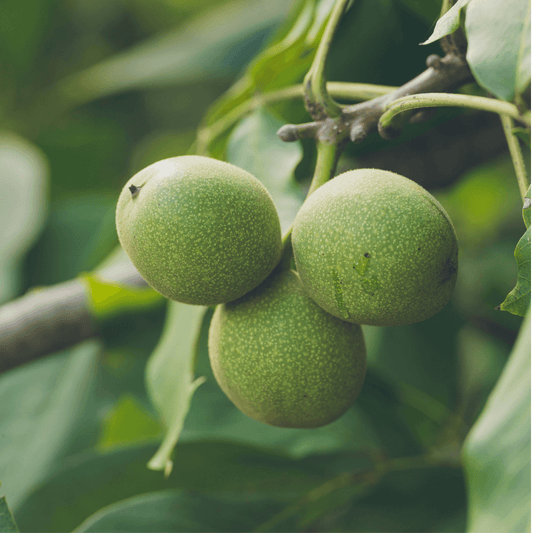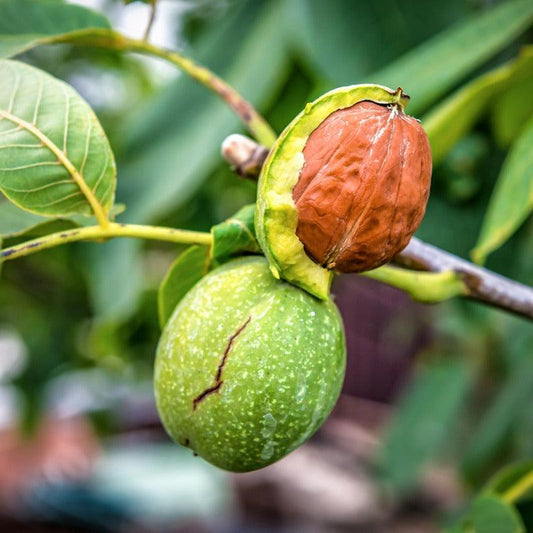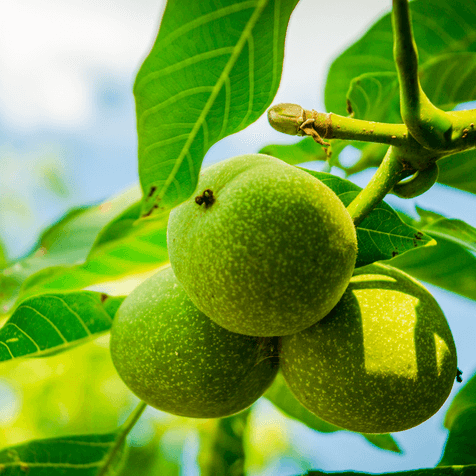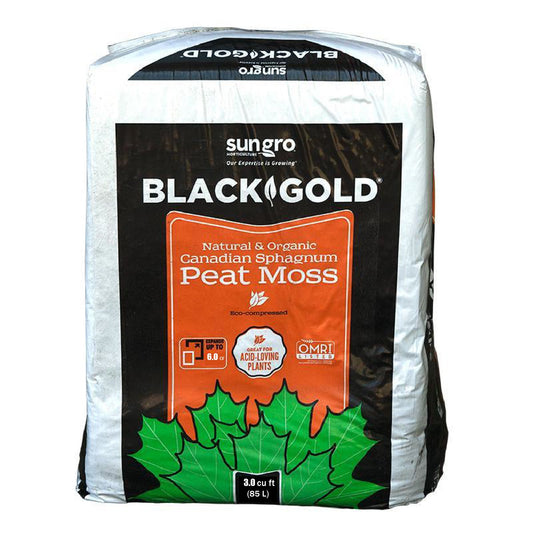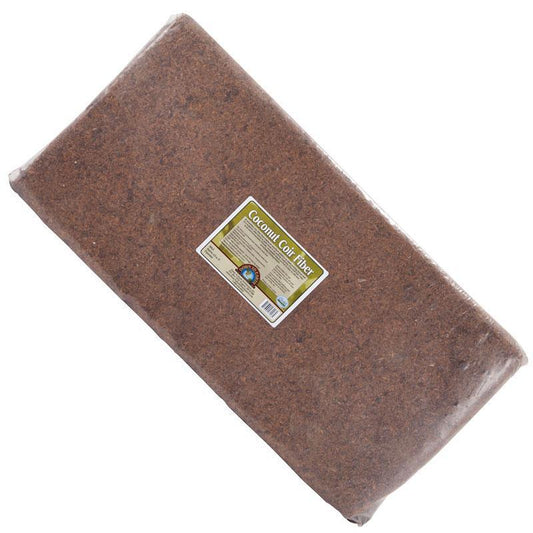Introduction
Walnut trees are revered for their elegant appearance and nutrient-rich nuts. However, their successful cultivation depends heavily on understanding and meeting their specific climate and soil requirements. Selecting the best soil for walnut trees, preparing the ground correctly, and ensuring compatibility with local environmental conditions are critical steps to establishing a healthy and productive walnut orchard. This guide delves into the ideal soil types, pH levels, climate needs, and soil preparation techniques necessary for walnut tree cultivation. By incorporating sustainable and organic methods, growers can support both the environment and their harvests.
Ideal Soil Types for Walnut Trees

Walnut trees thrive in deep, well-drained soils that provide ample room for their extensive root systems to grow. The ideal soil for walnut trees is loamy, a balanced mixture of sand, silt, and clay, which allows for excellent water retention and drainage. Loamy soils also offer walnut tree soil fertility by supporting a robust ecosystem of beneficial microorganisms and providing access to essential nutrients.
When choosing a planting site, prioritize areas with soils that:
- Are at least three feet deep to accommodate the tree’s large root system.
- Drain water efficiently, as walnut trees cannot tolerate prolonged waterlogging.
- Have moderate levels of organic matter to enhance nutrient availability and soil structure.
If the natural soil does not meet these walnut tree growing conditions, growers can improve it by adding organic amendments like compost or well-rotted manure. Sandy soils may require more frequent irrigation and organic matter to boost nutrient retention, while clay-heavy soils should be amended with sand and organic materials to improve drainage.
pH Levels for Walnut Tree Cultivation
Soil pH significantly impacts the availability of nutrients essential for healthy walnut tree growth. The optimal walnut tree pH level ranges from 6.0 to 7.5, slightly acidic to neutral. Within this range, the tree’s roots can absorb key nutrients such as nitrogen, phosphorus, and potassium, as well as trace elements like magnesium and calcium.
Acidic soils with a pH below 6.0 can limit nutrient uptake, leading to stunted growth and yellowing leaves. Conversely, alkaline soils with a pH above 7.5 may cause deficiencies in micronutrients like iron and zinc, often resulting in chlorosis (yellowing between leaf veins).
To determine the walnut tree soil pH level, conduct a soil test through an agricultural extension group or a home testing kit. If adjustments are needed:
- For acidic soils: Apply lime (calcium carbonate) to raise the pH gradually.
- For alkaline soils: Add elemental sulfur or organic materials such as pine needles to lower the pH.
Regular soil testing and careful management of amendments will help maintain an ideal pH range for walnut tree cultivation.
Climate Suitability for Walnut Trees

Walnut trees have specific climate requirements that must be met to ensure healthy growth and nut production. These trees are best suited to regions with temperate climates characterized by moderate winters and warm summers. Understanding walnut tree temperature tolerance and environmental requirements is crucial for selecting an appropriate planting site.
Temperature Needs
Walnut trees require a certain number of chilling hours (temperatures between 32°F and 45°F) during winter to break dormancy and promote flowering in spring. For most varieties, 400 to 1,500 chilling hours are sufficient. This makes walnut trees well-suited to areas with distinct seasonal changes, such as USDA Hardiness Zones 6 through 9.
During the growing season, walnut trees thrive in temperatures between 75°F and 85°F. Extreme heat above 100°F can cause leaf scorch and reduce nut quality, while late spring frosts may damage young buds and flowers.
Rainfall and Humidity
Walnut tree climate needs also include moderate rainfall, ideally between 30 and 40 inches annually. Excessive humidity or prolonged wet conditions can increase the risk of fungal diseases such as anthracnose and walnut blight. In drier climates, supplemental irrigation is essential to meet the tree’s water requirements, particularly during hot, dry summers.
Wind Protection
Walnut trees are sensitive to strong winds, which can damage their branches and reduce nut yields. Planting windbreaks or selecting naturally sheltered sites can help protect trees from wind stress and create more favorable walnut tree growing conditions.
Soil Preparation Techniques for Walnut Trees
Proper soil preparation lays the foundation for a healthy and productive walnut orchard. This process begins well before planting and involves creating a soil environment that supports vigorous root growth and nutrient availability.
1. Clear the Site
Remove any existing vegetation, rocks, or debris from the planting area. If the site has a history of persistent weeds, consider using an organic mulch or cover crop to suppress weed growth and improve soil health.
2. Test and Amend the Soil
Conduct a comprehensive soil test to evaluate walnut tree soil fertility, pH levels, and nutrient content. Based on the results:
- Incorporate organic matter such as compost or aged manure to enrich the soil and enhance its structure.
- Apply balanced organic fertilizers to address any nutrient deficiencies identified in the soil test.
- Adjust the pH as needed using lime or sulfur, as previously described.
3. Improve Drainage
Walnut trees require well-drained soil to prevent root rot and other moisture-related issues. If the site has heavy clay or compacted soils, improve drainage by:
- Adding organic amendments to increase aeration and water movement.
- Creating raised beds or mounds to elevate the root zone above poorly drained areas.
4. Deep Tillage
Loosen the soil to a depth of at least 18 inches using a rototiller or plow. This promotes deep root penetration and prevents the formation of compacted layers that can impede water and nutrient uptake.
5. Plan for Irrigation
Install an efficient irrigation system, such as drip lines, to provide consistent moisture throughout the growing season. Drip irrigation minimizes water waste and reduces the risk of disease by keeping the foliage dry.
6. Incorporate Cover Crops
Planting cover crops like clover or vetch before establishing walnut trees can improve soil fertility and structure. These nitrogen-fixing plants add organic matter and prevent erosion, creating ideal walnut tree soil preparation conditions.
Sustainable Practices for Climate and Soil Management

Walnut tree cultivation offers numerous opportunities to adopt sustainable practices that enhance soil health and minimize environmental impact. These include:
- Organic Fertilizers: Use compost, bone meal, and fish emulsion to provide nutrients without synthetic chemicals.
- Water Conservation: Implement drip irrigation and mulch to conserve water and reduce evaporation.
- Biodiversity: Plant hedgerows or wildflower strips near the orchard to support pollinators and beneficial insects.
- Erosion Control: Establish ground covers or plant grass between tree rows to reduce soil erosion on sloped sites.
By integrating these methods, growers can meet walnut tree environmental requirements while fostering long-term sustainability.
Conclusion
Meeting the climate and soil requirements for walnut trees is a critical step in ensuring their successful growth and nut production. From selecting the best soil for walnut trees and maintaining the optimal walnut tree pH level to preparing the soil and addressing climate needs, each aspect plays a pivotal role in establishing a thriving orchard. Sustainable practices such as organic fertilization, water conservation, and biodiversity support not only the health of your walnut trees but also the broader environment. By understanding and addressing these factors, growers can create conditions where walnut trees flourish, providing bountiful harvests for years to come.
Additional Resources
To further assist you in successfully growing walnut trees, explore these informative resources:
-
🌱Variety Selection for Walnut Trees: Choosing the Right Fit for Your Orchard – Tips on selecting walnut varieties that thrive in your region and suit your goals.
-
📘 A Comprehensive Guide to Growing Walnut Trees – A complete resource on walnut tree cultivation from planting to harvest.
-
🛠️ Planting Techniques for Walnut Trees: A Comprehensive Guide – Step-by-step planting instructions to help your trees get off to a strong start.
-
🌿 Maintenance and Care for Walnut Trees: Ensuring Long-Term Health and Productivity – Best practices for pruning, fertilizing, watering, and disease prevention.


